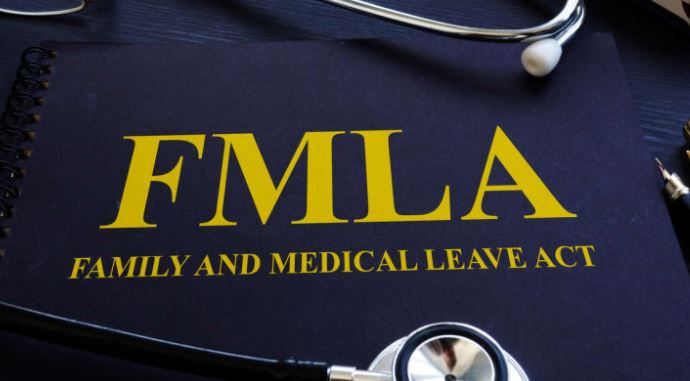The Department of Labor (DOL) revised Family and Medical Leave Act (FMLA) forms this summer, resulting in extensive changes that require more specific information in notices and medical certifications. The use of the forms is optional; employers can still create their own, though many HR professionals rely on the templates from the DOL.
But additional changes to the forms might be in order, legal experts say.
Among the forms changed were the WH-381, the notice of eligibility and rights and responsibilities; WH-382, designation notice; WH-380-E, medical certification of an employee’s serious health condition; and WH-380-F, medical certification of a family member’s serious health condition.
“Some of the forms were entirely reorganized and revamped,” said Scott MacDonald, J.D., SHRM-SCP, a senior HR management consultant with The Human Resource Consortium LLC in New Haven, Conn.
“Notably, the forms included reminders to not return completed forms to the DOL, so there must have been some confusion and misdirection of forms to date,” said Abigail O’Connell, senior counsel with Sun Life Financial in Wellesley Hills, Mass.
Notice of Eligibility and Rights and Responsibilities
The DOL made extensive changes to the notice of eligibility and rights and responsibilities, Macdonald said.
The old version of the notice had been organized by a list of employee responsibilities followed by a list of employee rights. This required an employee to refer to both sections to gather all the information on the same topic, such as substitution of paid leave, MacDonald noted.
The new model notice is reorganized into seven topics related to an employee’s FMLA leave and return to work, each with its own heading, lending greater clarity to the information provided on each topic, he said.
The DOL also aligned the notice more closely with the leave regulations, including:
- Requiring an employer to indicate how far short of the 1,250 hours of service requirement an employee is if a worker does not meet that eligibility criterion. The DOL notes that one of the requirements for an employee to be eligible to take leave under the FMLA is having worked 1,250 hours during the 12 months prior to the start of leave.
- The option for an employer to indicate the effect that FMLA leave has on employee benefits other than health insurance.
- Whether FMLA leave will run concurrently with workers’ compensation, any applicable disability insurance coverage or leave required by state law.
Matthew Morris, vice president of FMLA Source at ComPsych in Chicago, criticized the new form’s description of the popular rolling-backward method for calculating the 12-month period. The form states that, “Each time an employee takes FMLA leave, the remaining leave is the balance of the 12 weeks not used during the 12 months immediately before the FMLA leave is to start.”
“While this sentence is a useful description when the start of the leave is continuous, it is not necessarily true for an intermittent leave,” he said. “For intermittent leaves, the time is measured from each day the leave is used, not from the start of the approved leave period.”
He noted that this distinction is important because “employers are often keen to understand when employees who use significant amounts of intermittent time might exhaust their 12-week entitlement.”
Designation Notice
The most notable change to the designation form might be the DOL’s effort to outline the steps that an employee should take to amend an incomplete or insufficient certification, said Jeff Nowak, an attorney with Littler in Chicago.
“Here the DOL requires the employer to specifically explain what is missing and/or insufficient,” he said. “This change ultimately will serve the employer well, as it improves the chances that it will obtain the information it needs to make a designation decision.”
Medical Certifications
The revised health care provider certification for an employee’s own serious health condition or a family member’s condition now requires the health care provider to provide a “best estimate” of the employee’s or family member’s future treatment. “This is a big improvement,” said Jim Gilliam, an attorney with Burr & Forman in Greenville, S.C.
Janie Schulman, an attorney with Morrison & Foerster in Los Angeles, said that the certification for an employee’s own serious health condition asks the health care provider to describe at least one essential job function that the employee is unable to perform. The form tells health care providers that saying the duration of incapacity may be “lifetime,” “unknown” or “indeterminate” is not helpful and may not be enough to determine FMLA coverage, she added.
“These changes will hopefully make it easier for doctors to complete the forms and for employers to evaluate the information they receive, without needing to repeatedly bug the doctor for follow-up information,” she said.
Forms Critiqued
MacDonald said the DOL should have added an option for an employer to indicate whether the certification was an initial certification, a second opinion, a third opinion, an annual certification or a recertification.
The best way for employers to challenge the abuse of intermittent leave is the recertification process, Morris added. He said that the DOL should have created a separate form for recertifications.
“I would have liked to see the DOL add language in the [WH-]382 designation notice, addressing the frequency and duration of an intermittent leave, such as ‘Your health care provider has certified that your frequency and duration of intermittent leave is estimated to be XX episodes per month in a frequency of X-XX days per episode,’ ” said Joan Casciari, an attorney with Seyfarth in Chicago. The current form revisions retained some of the older form language which posed as confusing for many employers.
